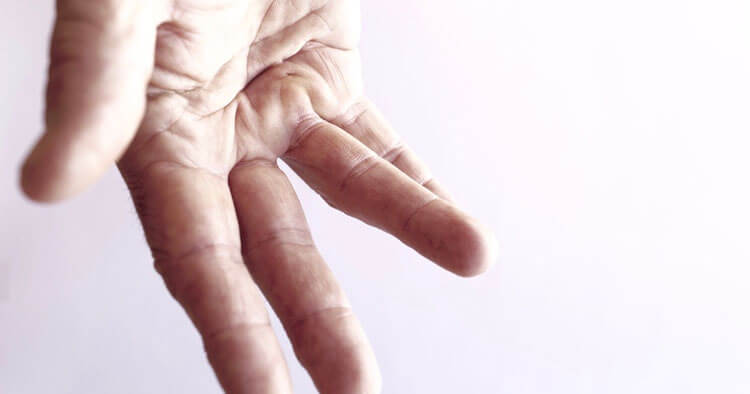Surgical Procedures and Protocols
Dupuytren’s Contracture Of The Hand
What Is A Dupuytren’s Contracture?
A Dupuytren’s contracture results from a condition that affects the fibrous layer of tissue that lies underneath the skin known as the fascia. The area where this fascia is affected is the skin in the palm and fingers with any contractures mainly affecting the ring and little fingers of the hand. With Dupuytren’s disease the fascia in this area thickens and then over time tightens, usually developing slowly over a period of years. In advanced stages of the disease it appears as if “knots” of tissue are forming under the skin, creating what feels like palpable thick cords of tissue. Although these cords in the palm may outwardly look like tendons, it is just the fascia, in Dupuytren’s disease the tendons of the hand are not actually involved. The effect of this tightening fascia and these “cords” is that it causes the fingers to be drawn inward, pulled down towards the palm, resulting in what is the highly recognizable Dupuytren’s contracture of the ring and little fingers.
In some instances of a Dupuytren’s disease the resulting contracture can interfere with hand function, when the tightening fascia is such that affected fingers can not be straightened completely it will clearly make certainly functions of daily living challenging. When contractures remain mild, treatment isn’t always necessary, however in more moderate, or severe cases where function is impacted nonsurgical and surgical treatment options are available to help slow the disease progression and improve movement in the affected fingers.
Symptoms Of Dupuytren’s Disease
As previously stated the hand contractures typically progress slowly, over years, not week or months. Often, Dupuytren’s disease is first picked up when nodules form under the skin in the palm which can be palpated as a firm lump, drawing peoples attention to the changes. Initially, nodules may feel tender to the touch but, over time, any tenderness to palpation usually subsides. Nodular changes may be followed with pitting, puckering or dimpling on the surface of the palm. Changes such as the forementioned pitting is created as the fascia below the skin pulls on the overlying skin.
In the later stages of Dupuytren’s contracture formation, cords of tissue begin to form under the skin, extending from the palm up to the fingers. As said cords “tighten” the fingers may be draw into a flexed position, pulled down towards the palm. These cords ultimately tether and restrict finger and thumb movement, impacting the ability to straightening or spreading apart impacted fingers.
Dupuytren’s contractures in brief
- Although the middle finger may become involved, the ring and little fingers are the most commonly affected fingers in the condition.
- The thumb or index finger are rarely affected by contractures in Dupuytren’s.
- A Dupuytren’s contracture can occur in both hands simultaneously. Yet it is common that one of the hands will usually be affected more severely than the other.
- Most commonly, the metacarpal phalangeal joint which is the first joint of the finger (commonly known as the knuckle joint) is affected with the contractures, however finger joints closer to the tip of the fingers may also be involved.
In moderate and severe cases as the contracture in the fingers sink their teeth in, it may become hard to straighten out the fingers fully. Such contractures ultimately lead to some difficult in carrying out simply daily tasks such as grasping large objects, or even putting your hand in your pocket.
Disclaimer: Sydney Physio Clinic provides this information as an educational service and is not intended to serve as medical advice. Anyone seeking specific advice or assistance on Dupuytren’s Contracture Of The Hand should consult his or her physiotherapist, general practitioner or otherwise appropriately skilled practitioner.


